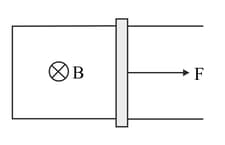Figure 6.79 shows a rectangular conducting loop in which arm of length '' is movable. The loop is kept in a uniform magnetic field '' directed downward perpendicular to the plane of the loop. The arm is moved with a uniform speed ''.
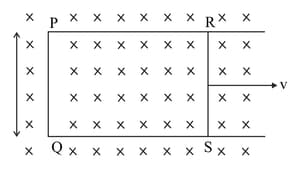
Deduce the expression for the power dissipated as heat.


Important Questions on Electromagnetic Induction
A rectangular conductor, , is placed in a uniform magnetic field , directed perpendicular to the plane of the conductor (as shown in Fig. 6.80). Obtain an expression, for the emf induced in the arm , when the arm is moved towards the left with a speed .
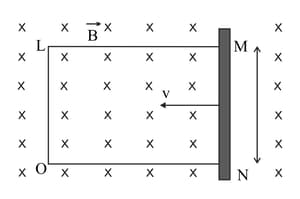
A rectangular coil is moved from a point to another point with uniform velocity '' through a region of a uniform magnetic field acting normally inwards as shown in the figure. Show graphically (i) the variation of magnetic flux associated with the coil with time, (ii) variation of induced emf across points and of the coil with time.

Explain the nature of variation in magnetic flux as represented by the graph in first case.
A bar magnet is dropped so that it falls vertically through the coil . The graph obtained for voltage produced across the coil vs time is shown in Fig. 6.83 (b).
Explain the shape of the graph.
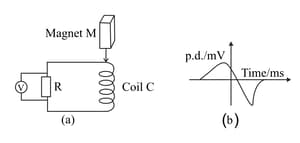
A bar magnet is dropped so that it falls vertically through the coil . The graph obtained for voltage produced across the coil vs time is shown in Fig. 6.83 (b).
Why is the negative peak longer than the positive peak?
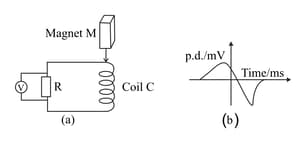
Figure 6.85 shows a bar magnet falling under gravity through an air-cored coil . Plot a graph showing variation of induced emf () with time (). What does the area enclosed by the curve depict?
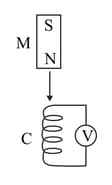
A small square loop of wire of side is placed inside a large square loop of wire of side . The loops are coplanar and their centres coincide [Fig. 6.86]. Find the mutual inductance of the system.
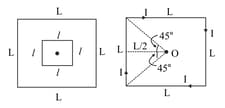
In Fig. 6.87, a rod closing the circuit moves along a U-shaped wire at a constant speed v under the action of the force . The circuit is in a uniform magnetic field perpendicular to its plane. Calculate if the rate of generation of heat is .
